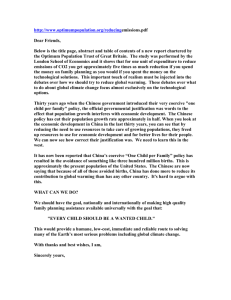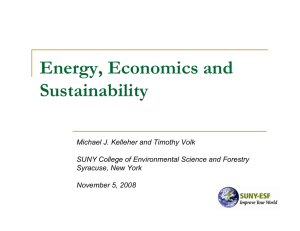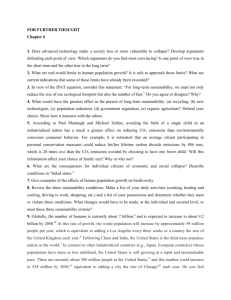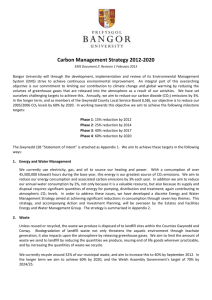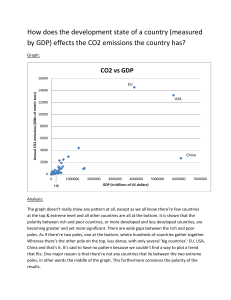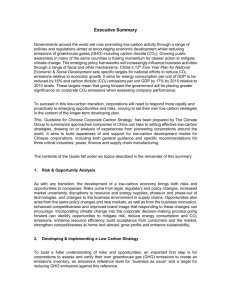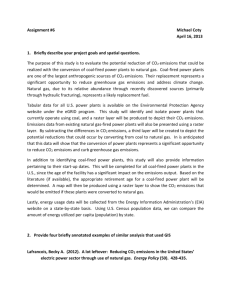OPT CC Report Summary - Population Media Center
advertisement
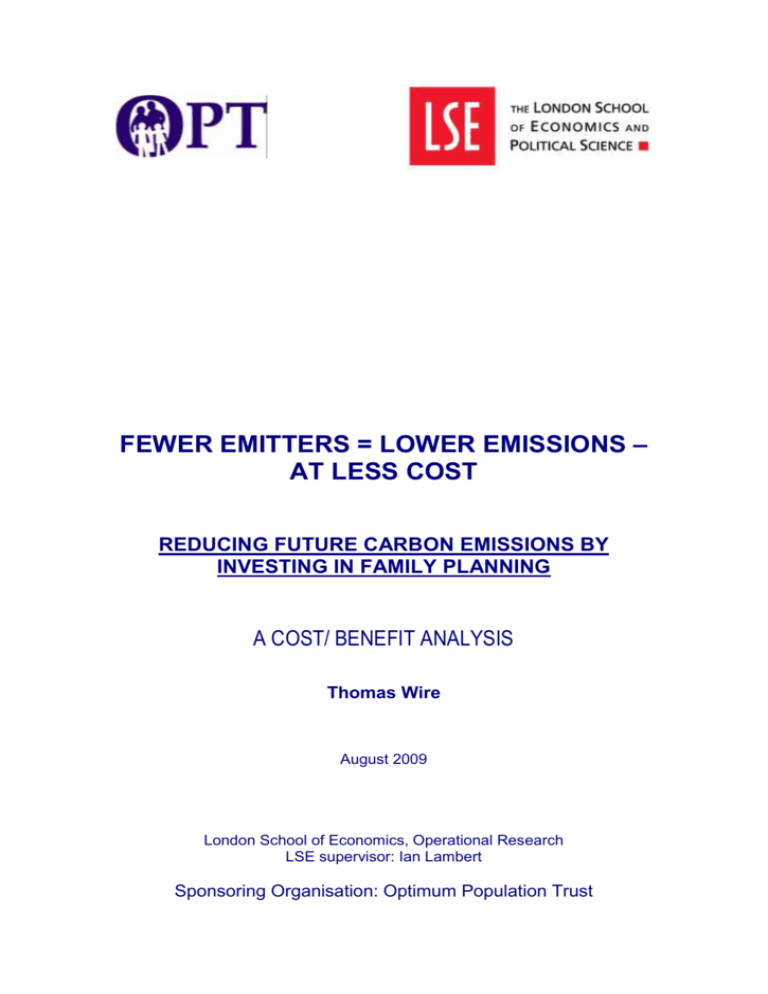
FEWER EMITTERS = LOWER EMISSIONS – AT LESS COST REDUCING FUTURE CARBON EMISSIONS BY INVESTING IN FAMILY PLANNING A COST/ BENEFIT ANALYSIS Thomas Wire August 2009 London School of Economics, Operational Research LSE supervisor: Ian Lambert Sponsoring Organisation: Optimum Population Trust EXECUTIVE SUMMARY The Client This project has been commissioned by the Optimum Population Trust, a UK environmental charity and think tank, raising awareness of the environmental impact of population growth. Purpose of the Project The purpose of this project is to perform a cost-benefit analysis of reducing carbon emissions by non-coercively reducing population growth. The basic tenet of this project is that fewer people will emit fewer tonnes of carbon dioxide (CO2). The study estimates the costeffectiveness of providing global access to basic family planning (as a major method of population growth reduction) in reducing future CO2 emissions between 2010 nd 2050. This finding is compared to other means of reducing CO2 emissions. Methods Used The cost of global family planning was calculated in one model and analysed against the estimated reduction in CO2 emissions calculated in a second model. The cost-effectiveness of family planning was then compared to the cost-effectiveness of modern low-carbon technologies. The first model was developed to estimate the cost of providing family planning to all women who wish to delay or terminate childbearing but who are not using contraception i.e. all with unmet need for family planning. Recent data was inputted into the model primarily from the UN and the Global Health Council. A second model utilised UN projections for population levels and CO2 emissions, adjusting values in accordance with increased access to family planning. This adjustment was based on a finding stated in the UN Population Fund’s report, Adding it Up: The Benefits of Investing in Sexual and Reproductive Healthcare (Singh et al): meeting all unmet need will reduce unintended births by 72% (20). Findings The study found that each $7 spent on basic family planning (2009 US$) would reduce CO2 emissions by more than one tonne (meeting all unmet need between 2010 and 2050). By comparison, a one tonne reduction in CO2 emissions is predicted in Project Catalyst1 to cost a minimum of $32 using low-carbon technologies (Project Catalyst 10): $25 more per abated tonne of CO2 than family planning. This study also found that meeting all unmet need would prevent the emission of at least 34 Gt of CO2 (gigatonnes of CO22) between 2010 and 2050 making the assumption that demand for family planning is not stimulated by family planning proposals. Recommendations From the cost-benefit analysis, it has been found that family planning (considered purely as a method of reducing future CO2 emissions) is more cost-effective than most low-carbon technologies. It is recommended that an optimum mix of carbon-reducing methods includes family planning as one of the primary methods. “Project Catalyst is an initiative of the ClimateWorks Foundation, […] launched to provide analytical and policy support for the United Nations Framework Convention on Climate Change […] see www.climateworks.org” (Project Catalyst 5). 1 2 1 Gt = 1 gigatonne = 1 billion tonnes = 1 × 109 tonnes (metric tons)
